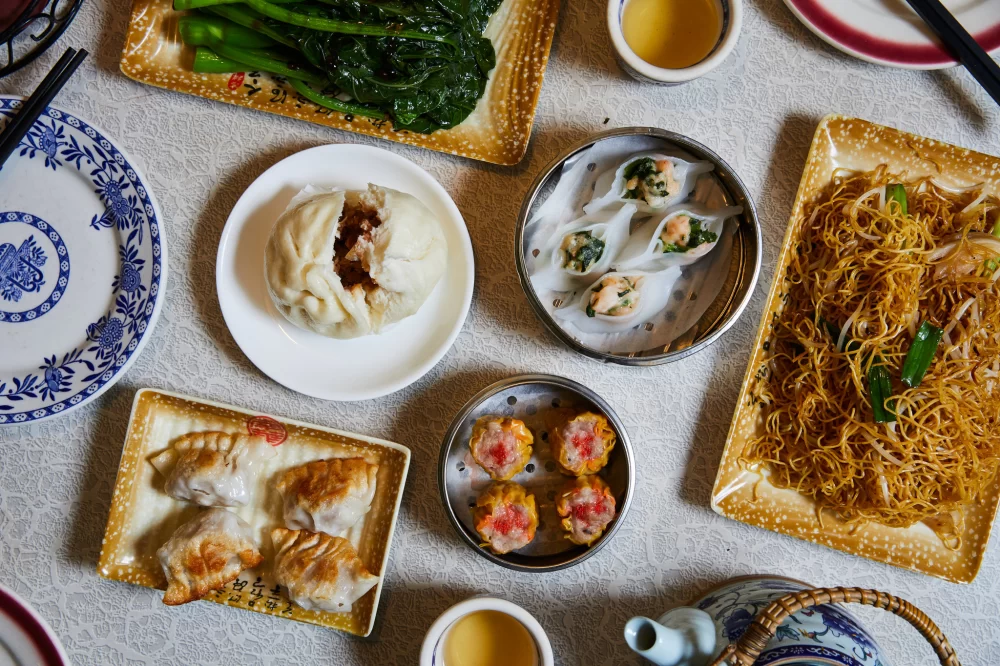Have Chinese Restaurants Declined in Popularity Over the Years?
As I sit down at my favorite Chinese restaurant, savoring the crispy spring rolls and savory General Tso's chicken, a thought often crosses my mind: Have Chinese restaurants declined in popularity? This is a question I've noticed come up more often in recent years, especially as dining trends shift and the food scene evolves. I’ve been a fan of Chinese food for as long as I can remember, but the once-dominant presence of Chinese restaurants in nearly every American neighborhood seems to be fading. So, is there a decline in the popularity of Chinese restaurants, or is it simply that their offerings have evolved over time?
The Rise and Golden Age of Chinese Restaurants in America
To understand the decline (if there is one), we first need to look back at the history of Chinese restaurants in the United States. The first wave of Chinese immigrants began arriving in America in the mid-1800s, primarily to work on the Transcontinental Railroad and in other labor-intensive jobs. While the original intention of these immigrants wasn’t to open restaurants, many turned to the food industry as a way to sustain themselves.
By the early 20th century, Chinese restaurants began to establish a foothold in major cities across the country, catering to both immigrant communities and curious Americans eager to try exotic new cuisines. In the 1960s and 1970s, Chinese food experienced a golden age in America. With the rise of American suburbs and an increasing middle class, Chinese restaurants became a staple in every town, offering a combination of affordability, convenience, and bold, comforting flavors. It seemed like Chinese restaurants were here to stay.
The Changing Landscape of Dining
Over time, however, things started to change. I began to notice that some of my favorite Chinese spots weren’t as busy as they used to be. New food trends were emerging, and the once-iconic Chinese restaurant began to face stiff competition. One of the biggest factors, I believe, is the dramatic shift in the way people approach dining out.
The rise of fast-casual dining, where food is prepared quickly but still fresh and customizable, has taken a significant chunk of the dining market. Concepts like Chipotle and Sweetgreen have reshaped what people expect from a dining experience. People want healthier, quicker options that feel more personalized to their tastes, and unfortunately, Chinese food has sometimes been left behind. While traditional Chinese restaurants offered family-style meals with large portions, the trend has shifted toward smaller, individual-sized meals. In this context, Chinese food—often seen as heavy or overly indulgent—has had to compete with new, lighter alternatives.
Health Trends and the Perception of Chinese Food
Another factor in the decline of Chinese restaurants is the increasing focus on health-conscious eating. As more and more Americans become aware of the impact of their dietary choices, there’s been a growing demand for meals that are lower in calories, fat, and sodium. For many, the perception of Chinese food as being greasy and high in sodium has made it less desirable. The classic American Chinese dishes—like sweet and sour chicken, fried rice, or orange beef—are delicious but often heavy and loaded with sugar, oil, and salt.
I've noticed that some Chinese restaurants have attempted to respond to this by offering healthier options, like steamed vegetables, brown rice, and lighter sauces. However, these adjustments haven’t always been enough to change the broader perception. Despite the delicious flavors, Chinese food’s reputation for being unhealthy has made it less attractive to health-conscious diners.
The Rise of New Asian Cuisines
Interestingly, while traditional Chinese restaurants may be on the decline, other types of Asian cuisine, such as Japanese, Korean, and Thai food, are gaining popularity. Sushi bars, Korean BBQ, and pho restaurants have proliferated, and they’re appealing to a younger generation of foodies looking for unique and diverse experiences. These cuisines often offer a lighter, more modern approach to dining, with fresh ingredients, smaller portions, and a focus on health-conscious options. I can’t help but notice how the popularity of sushi and ramen shops, for instance, has skyrocketed in comparison to Chinese food establishments.
Changing Consumer Habits
Today, many people prefer quick, on-the-go meals, and Chinese restaurants often don’t fit the bill. The traditional sit-down experience of waiting for your meal, sharing family-style dishes, and enjoying a leisurely evening out has given way to the demand for delivery apps and faster dining options. I’ve found that many people, myself included, are increasingly ordering food to go or through services like DoorDash, Grubhub, and Uber Eats. This change in consumer habits has made it harder for some Chinese restaurants to stay afloat, especially when they haven't fully embraced the online ordering and delivery trends.
Additionally, the explosion of food delivery services has led to an oversaturation of the market. More options are available at the click of a button, and sometimes, Chinese food gets lost in the shuffle. It's easy to be overwhelmed by the sheer number of restaurants offering delivery, making it difficult for traditional Chinese restaurants to stand out.
Is There Hope for Chinese Restaurants in the Future?
Despite the challenges, I don’t believe that Chinese restaurants are destined to fade into obscurity. Some establishments have managed to thrive by adapting to modern tastes. For example, some restaurants are revamping their menus with healthier options, offering locally sourced ingredients, and incorporating contemporary cooking methods. Others have embraced new technology, creating user-friendly apps for ordering food and making it easier for customers to enjoy their dishes at home.
Additionally, there’s still a strong sense of nostalgia attached to Chinese food in America. For many, it’s a go-to comfort food, whether it’s for a family gathering, a late-night snack, or a special occasion. And that cultural connection to Chinese cuisine is something that can’t be easily replaced by newer dining trends.
As I reflect on the changes in the restaurant industry, it’s clear that the decline of Chinese restaurants is not absolute. It’s more about how these restaurants evolve to meet the needs of modern consumers. As long as there’s a demand for delicious, flavorful food, Chinese restaurants will continue to adapt and remain an important part of America’s culinary landscape.








